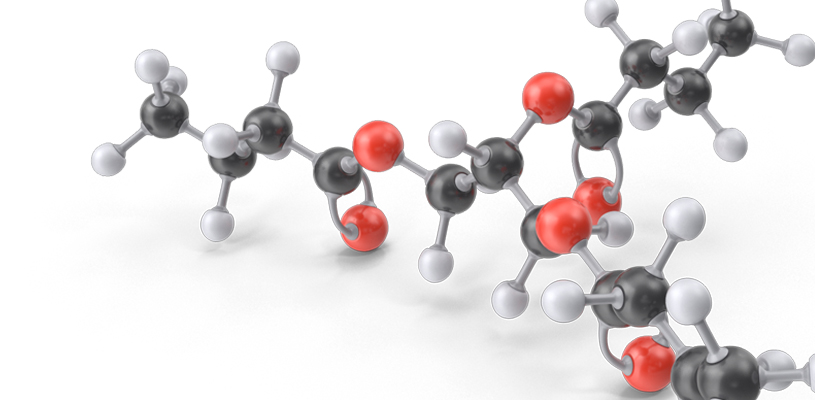Frequently Asked Animal Nutrition Questions 2025 - part 1
Our customer facing colleagues receive a lot of questions from the market. Obviously some more frequently than others.
We have collected 5 of the most relevant and most frequently asked questions for you and will answer them here. Scroll down to read answers to:
- Who is Perstorp Animal Nutrition?
- How is ProPhorce™ SR different from other butyric acid products?
- Is dosing Gastrivix™ Avi at only 250 grams per ton recommendable?
- Does ProPhorce™ SR 130 survive the heat of pelleting?
- What is the latest science on the synergy between Butyric and Valeric Acid?
Question 1: Who is Perstorp Animal Nutrition?
We actually receive this question quite a lot and it’s a very relevant one. ‘Who am I?’ is one of life’s big questions that will always be complex to answer. It’s the same for people and companies. Especially one as old as Perstorp, which has been around since 1881! Even back then acids were important as one of the first products by the company was acetic acid. Over the decades since then Perstorp has made a habit of reinventing itself successfully to blossom into the world-leading specialty chemicals company that it is today, boasting a total of around 1.500 employees all over the world enjoying a rich company culture.
Since you’re following this channel, one might assume that you have an interest in our animal nutrition team within Perstorp. Animal Nutrition is one of Perstorp’s main segments today and started its business in the 1960s. Similar to the entire Perstorp Group, Perstorp Animal Nutrition has reinvented itself over time. It has grown from supplying organic acids for silage and grain preservation exclusively, to a solution and science driven team that prides itself in being the first to introduce innovative new molecules to the market and package them into holistic solutions that can support gut health, acidify feed or help optimize dEB – to name but a few. Perstorp produces key organic acids such as propionic acid, formic acid, butyric acid and valeric acid. Perstorp Animal Nutrition has researched those molecules and their results in animal nutrition and focused on finding the best ways to apply them. Today that often means combining several esterified organic acids with other compounds for broad functionality and synergetic effects for specific goals, such as growth or facing weaning challenges.
It is our mission to remove the concerns our customers may have about the gut health of their animals. Through the products we create, but also through the advice we can supply from the combined knowledge and decades of experience in our team.

Question 2: How is ProPhorce™ SR different from other butyric acid products?
The presence of butyric acid in the gastrointestinal tract was discovered a long time ago and some of its benefits became clear shortly after. Adding butyric acid products to animal nutrition is far from a new practice. However, two challenges had to be overcome in order to effectively deliver the potential advantages of butyric acid to farm animals.
Firstly, the odor of pure butyric acid had to be managed. Even humans can detect the unpleasant scent at as little as 10 parts per million. Secondly butyric acid does its best work in the gastrointestinal tract (GIT). Simply adding it to feed means that it will be rapidly absorbed in the upper gastrointestinal tract, often before reaching the intestinal areas where it could potentially support epithelial cells.
Up until around 2012 the most common solution tackling both these challenges was to coat with sodium butyrate. The idea is that the coating protects the butyric acid from evaporating (no smell) and it protects it in the stomach until the fat coating is broken down in the GIT for release where it makes a difference. These products have proven effective and are still available today. There is however always a compromise between efficacy of the coating versus the concentration of butyric acid in the product. More stable coatings often delay release until the large intestine, which may reduce the potential benefits for small intestine health. Products with a low percentage of coating are more likely to release the acid and spread that undesired smell. Products with a high percentage of coating don’t display that drawback, but instead require higher dosage in the feed as the concentration of butyric acid is much lower, taking the place of nutrients or other additives.
In 2012 Perstorp had researched the workings of a new butyric acid solution for animal feed and launched ProPhorce™ SR (tributyrins) to the market. This innovative solution is created through an esterification process combining butyric acid with glycerol. The new molecule that is formed contains 3 butyric acid molecules attached to the glycerol backbone. Tributyrins overcome the challenges presented by butyric acid effectively. The product has a high concentration of butyric acid, and is stable until released under the influence of lipase enzymes act on it in the gastrointestinal tract. A breakthrough in animal nutrition!
Fast forward a decade or so and the benefits of tributyrins have not remained unnoticed by the market. However, as with any established technology, quality variations have emerged between different tributyrin products. Today new challenges face the market as not all tributyrins are created equal. Producing consistent, high-quality tributyrins requires specialized knowledge and access to premium raw materials, along with controlled esterification processes.
ProPhorce™ SR products remain a benchmark in their field for product stability, consistency, quality and concentration levels. If you’re in the market for a dry product, the flowability of many dry tributyrin solutions is also something to evaluate your sources on. ProPhorce™ SR 130 leaves many competitor products in the dust (pun intended) in that regard. Lastly there is the real proof.
As ProPhorce™ SR is the original tributyrin solution, the extensive body of research and field trial data accumulated over years of use is unmatched. This provides users with substantial technical support and reference material when making their product selection. When you choose ProPhorce™ SR, you also choose for that unmatched technical background.

Question 3: Is dosing Gastrivix™ Avi at only 250 grams per ton recommendable?
One of the questions we get most often nowadays is about the dosage of one of our most recent innovations: Gastrivix™ Avi and it’s dosing. Customers want to know if dosing at only 250 grams per ton is recommendable?
Gut health remains a key factor in broiler production. When intestinal function is supported, birds may utilize nutrients more effectively, which can contribute to consistent production cycles.
Perstorp was the first to produce and successfully trial the commercial use of esterified valeric acid in animal nutrition. Like butyric acid, valeric acid also occurs naturally in broilers’ gut microbiota, however typical production within the animal are limited. We have applied our well-established esterification technique, successfully used in our ProPhorce™ SR brand, and have adapted it to valeric acid. By combining valeric and butyric acid esters, we’ve developed Gastrivix™ Avi – a blend designed to support intestinal morphology, barrier function, and microbial balance. After five years of research into this synergistic approach, our trials suggest optimal inclusion levels under controlled conditions: 500 g/t in starter and early grower phases, reducing to 250 g/t during finisher phases. These levels were selected based on observed outcomes regarding nutrient utilization and intestinal health markers.
Since we all know optimal conditions are rarely perfect, farm-specific factors like chick quality, housing systems, and health challenges all influence results. We’d love to connect, understand your reality, and create a tailor-made dosing program just for you! All so you can experience the magic of growth you only get with Gastrivix™ Avi!

Question 4: does ProPhorce™ SR 130 survive the heat of pelleting?
ProPhorce™ SR 130 sets itself apart from competition not just by the advanced technology behind it, but also by the superior quality of the raw materials and carrier used. Perstorp controls the entire production process, from the selection of top-tier ingredients to the final product. This integration ensures that the butyric acid, glycerol, and carrier are of the highest quality, leading to a product that excels in flowability, particle size distribution and thermostability.
The quality of the carrier used for the butyric acid in ProPhorce™ SR 130 plays a crucial role in maintaining the integrity of the product during mixing and feed production. This attention to detail results in a product that is not only effective but also easy to handle and incorporate into various feed formulations.
In a recent test conducted in the Asia-Pacific region, five samples from different batches of shrimp feed were analyzed for butyric acid content after pelleting. The results showcased an impressive average recovery rate of 92%, with all samples falling within a 90–95% recovery range. This consistency ensures that the product retains its efficacy from production to consumption, delivering reliable performance when it matters most.
If you'd like to learn more, we're happy to share additional insights. Don't hesitate to reach out – we'd love to connect and discuss how our product can support your business. Contact Tony >>

Question 5: What is the latest science on the synergy between Butyric and Valeric Acid?
One of the latest additions to our portfolio is the combination of butyric and valeric acid glycerides, developed to align with current research into nutritional strategies for monogastric diets. Both of these short-chain fatty acids occur naturally in the intestinal tract. Given the growing scientific interest in this area, we are frequently asked about the latest findings related to this combination.
Butyric acid (BA) and valeric acid (VA) are naturally occurring short chain fatty acids produced by the gut microbiota and play essential roles in animal health. While naturally present, targeted supplementation depends on effective delivery systems. Our esterification technology facilitates the controlled release of BA and VA along the gastrointestinal tract. By binding these acids to glycerol (as mono-, di-, and tri-esters), we aim to:
- target release along the gastrointestinal tract to align with nutrient delivery goals
- improve product stability and handling properties compared to free acids
- reflect the natural coexistence of microbiota-derived butyric and valeric acids
Butyric acid (BA) has been studied in animal nutrition in relation to intestinal morphology and epithelial structure. It is known to act as an energy source for specific intestinal cells and has been reported in studies to support features such as villus height and epithelial integrity.
Valeric acid (VA), while less widely studied, has been investigated for its potential role in animal nutrition. Studies on VA glyceride esters have reported numerical improvements in performance indicators such as feed conversion ratio (FCR) and intestinal morphology, including villus-to-crypt ratios.
Recent trial data indicate that a combination of BA and VA glycerides may yield more consistent results than individual acids alone. Poeikhampha et al. (2025) compared a BA-VA blend to tributyrin in broilers, observing improved average FCR (1.37 vs. 1.42 in controls) and body weight gain. The authors noted a potential positive effect with the 2 acids compared to butyrin’s alone.
Similarly, Gracia et al. (2024) evaluated a butyric acid and valeric acid glycerides blend across six trials in Europe. The trials showed higher final body weights (+2.5%), improved FCR (1.58 vs. 1.60), and lower finisher-phase mortality in supplemented groups. The authors discussed these observations in the context of potential product effects on gut-related performance factors.
Perstorp’s pioneering work with valeric acid, combined with our deep understanding of the balance between valeric and butyric acids, highlights the crucial role this synergy plays in our solutions. Our work continues to explore how these components interact under commercial production conditions.

Haven't had enough yet? Read the next 5 Frequently Asked Questions here >>